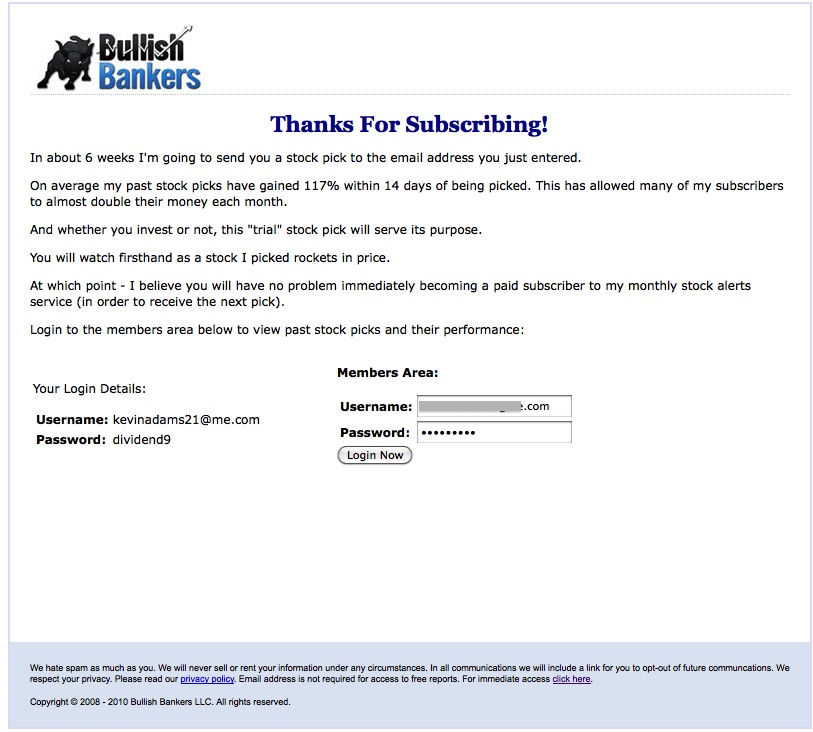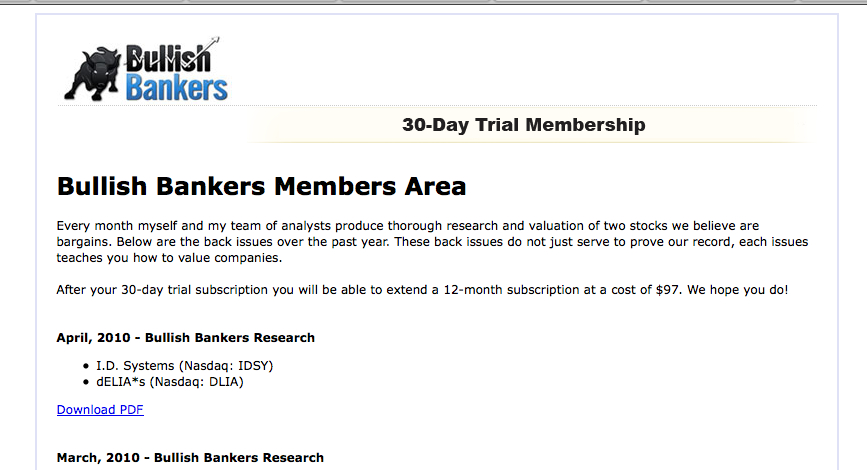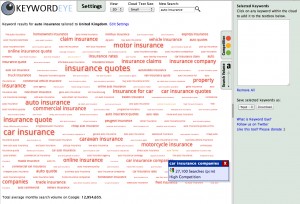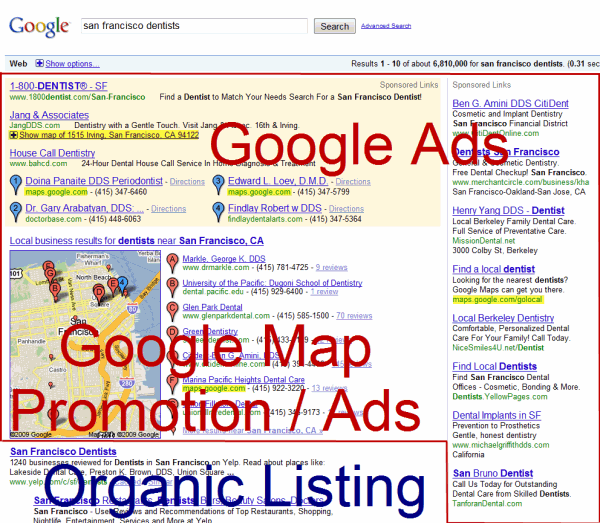
Psychological triggers are a very powerful marketing tool.
Psychological triggers are the mechanisms of thought by which people make a decision to view your ad instead of others, or convert from tire kicker to buyer.
Let’s take a look at twelve common psychological triggers that you can weave into your ad copy and landing pages.
1. Engagement
People love to feel a sense of engagement.
Offline, people engage by picking up the item they are thinking of buying and manipulating it. Touch is a powerful form of engagement. If people are buying services off someone, they’ll want to look them in the eye.
The alternative – disconnection – is a barrier to the sales process. Given the remote nature of the online experience, disconnection can be a real problem. Look for ways you can create engagement.
For example, consider the “will it blend” approach. They take an item the buyer is already engaged with, and probably has direct experience of, and blend it. The visitor is also engaged by the fun of it. It’s something the visitor would probably like to do themselves, and the video immerses her in that experience. It feels tactile.
Engagement isn’t a real-time chat widget. Engagement is making the visitor feel a connection with what you’re selling. Put the visitor in the scene. Think about their existing experiences and link your product to them.
Make it tactile.
2. Greed
Greed is a pejorative term, but it is a human reality. We’re all a little greedy, just some are much more so than others. Your buyers are a little greedy, too.
Greed is a very powerful motivator. How many things have you bought that you don’t need simply because they were a bargain? It could be said that internet commerce is driven largely by price. People perceive the internet as the place to shop around for bargains, and will forsake the safety of a store purchase if the “internet price” is low enough.
Think about ways you can convince people they can get more for less by shopping with you.
3. Demonstrate Authority
“Largest”. “Biggest” “Best” “Specialist”. All appeals to authority.
If you’re going to buy something, and prices are the same from various suppliers, you want to buy it off the seller who conveys a sense of authority. Do they look like they know what they’re doing? It’s a form of reassurance and especially important on the web where people can’t look behind the curtain.
Authority is easiest to spot when it is absent. What to you think about pages written in pigeon English? Pages that contain spelling mistakes and grammatical errors? Pages that look like they’ve been designed by a child?
4. Demonstrate Satisfaction
This is the classic “money back if not satisfied” guarantee.
In case-study after case-study, offering money-back is a sure fire way of increasing conversion rates. Buyers do not want to make mistakes. If you can reassure them it’s not possible to make a mistake at the point of sale, then this removes a major barrier to purchase.
The beauty of it is that you aren’t giving them anything to which they aren’t already entitled by law. If a person really isn’t satisfied with a product or service, and they’re angry about it, they can reverse charge their credit card. Consumer law in many countries allows for a cooling-off period for buyers, particularly on items that are delivered by mail.
5. Timing
Right time, wrong place? Wrong place, right time?
The success of many products and services comes down to timing. Is the market ready for what you’ve got? Has the market moved on, and you’re too late?
It’s important to frame things as being “of now”. Many companies release yearly versions of products i.e. “updated for 2011!” in order to sound contemporary.
Another way of doing it is to relate your product to an event. For example, if hurricanes feature a lot in the news, then, say, relating your building products to hurricane preparedness is a good idea.
6. Association
Take something the user already does, or knows about, and associate your product with it.
For example, email is a killer app partly because it can be explained in terms of something a person already does – writes letters. That’s why it’s called “mail”. Social networks are popular because they take something the user already does – chats with her friends – and puts it in an online context.
7. Consistency, Honesty And Integrity
Your copy needs to be consist, honest and show integrity.
If just one statement you make doesn’t ring true, then it compromises the integrity of everything else you do. Avoid making outlandish claims unless you can demonstrate them to be true.
There’s another element to consistency, and that is consistency in buying behavior. Note how Amazon suggests other books you might like during and after you make a purchase. I’m sure they sell a lot more books this way.
They are making offers consistent with the original purchase. The pitch has integrity because it’s related to the original purchase. It’s also a great point to provide extra value to the visitor, as Amazon often bundles offers together at a discount price.
8. Feeling Part Of Something Bigger
We all want to belong.
Think about ways you can show this in your copy and in your sales process. Tried-and-tested ways include testimonials, reviews, and revealing other buyers activity i.e. 20 people bought this today!. It may be irrational, but it feels safer to go where others have gone before.
Use the terms “we” and “you” frequently. Be inclusive. Show images of real people – in groups. Avoid stock-images of plastic-looking people (see consistency, honesty and integrity above). Frame your product in a social context. See how Apple does it.
9. Curiosity
Arouse curiosity.
This is especially important to get the click-thru. The ad has to be relevant, of course, but if you can manage to work in a curiosity angle, too, it becomes that much more powerful. Once the visitor has clicked thru to your landing page, continue to arouse curiosity to keep them reading.
Common techniques include posing a question and not answering it immediately, telling a story, adding an element of mystery, and sharing a secret.
10. Urgency
Use a sense of urgency to get over the common buyer resistance point: “I’ll think about it”
Give reasons why the buyer should buy now rather than later. Careful not to be dishonest about it. Many sites mistakenly create a notion of scarcity that is false i.e. only ten copies of the e-book available! If this claim doesn’t ring true, then people will back off.
11. Fear
Fear of missing out. Fear of being left behind. Fear of the consequences if you don’t act. Fear of the unknown.Fear of losing control.
It’s said that all consumerism is driven by fear. Like it or not, it’s a fundamental truth about the way marketing works in modern society. Look for insecurities and supply the visitor with symbolic substitutes to address those insecurities. The entire make-up industry runs on this concept.
12. Exclusivity
Everyone likes to feel special. A cut above the rest.
Is there an exclusive aspect to your products? It may seem counter-intuitive to limit availability, but it can serve to drive up the price and make your product even more appealing.
Once you’ve identified people who buy on this psychological trigger, you can make them further exclusive offers on other products you sell.





 Click to Enlarge
Click to Enlarge








